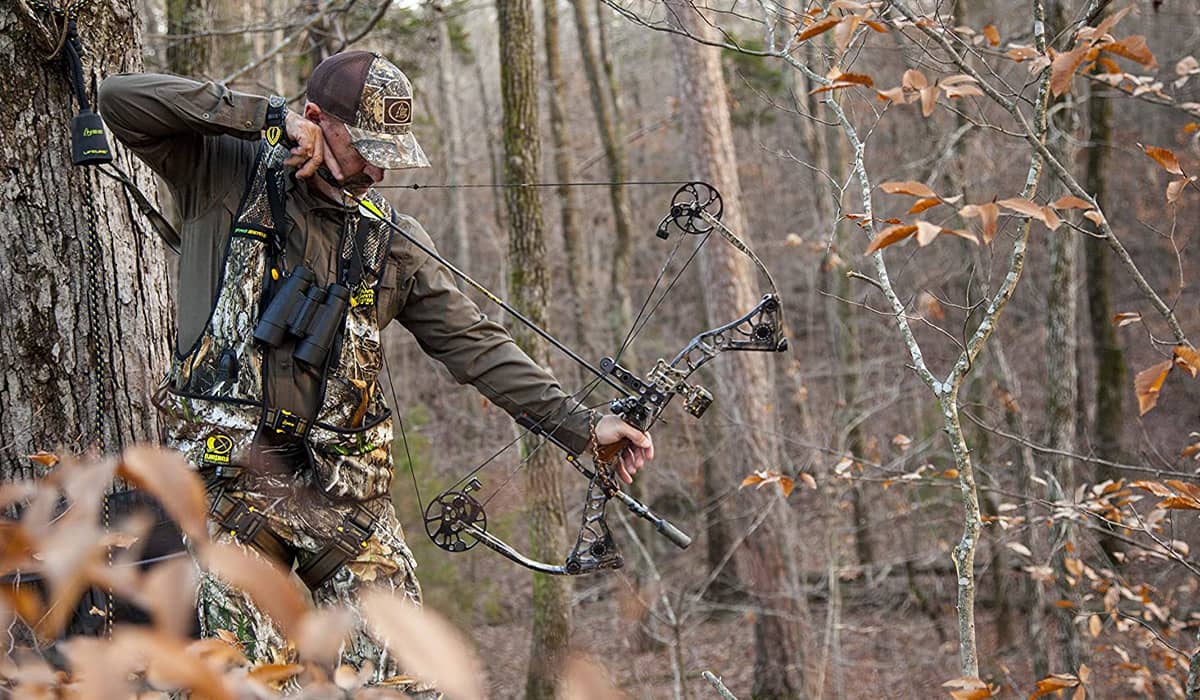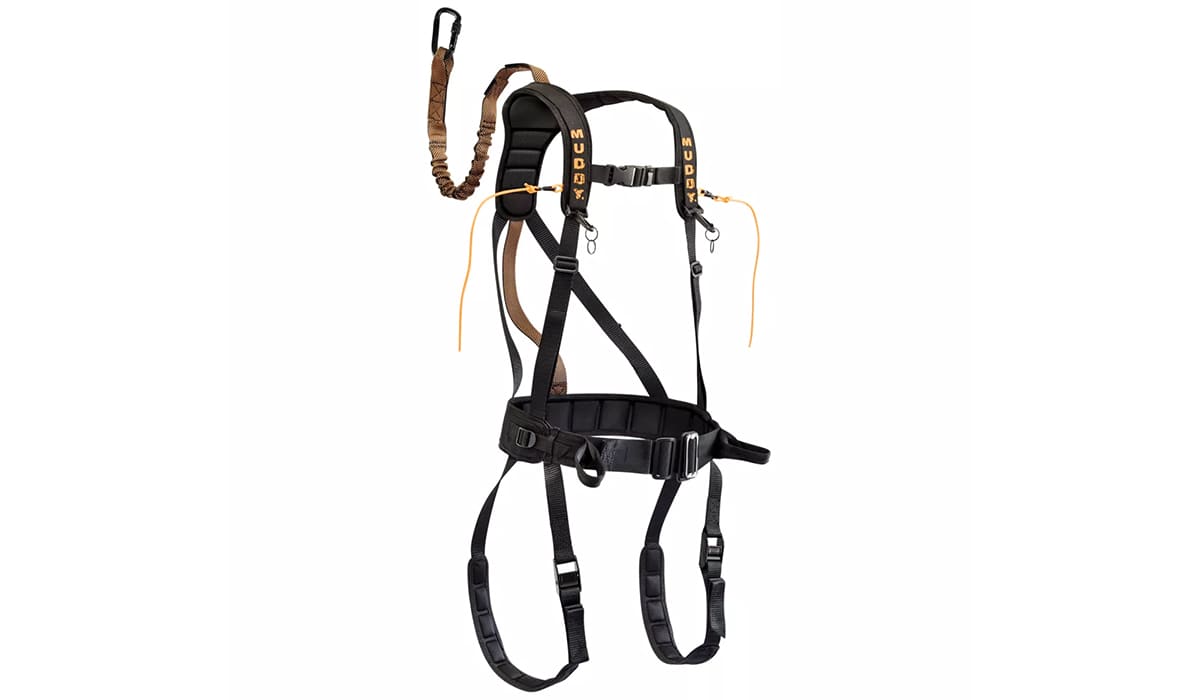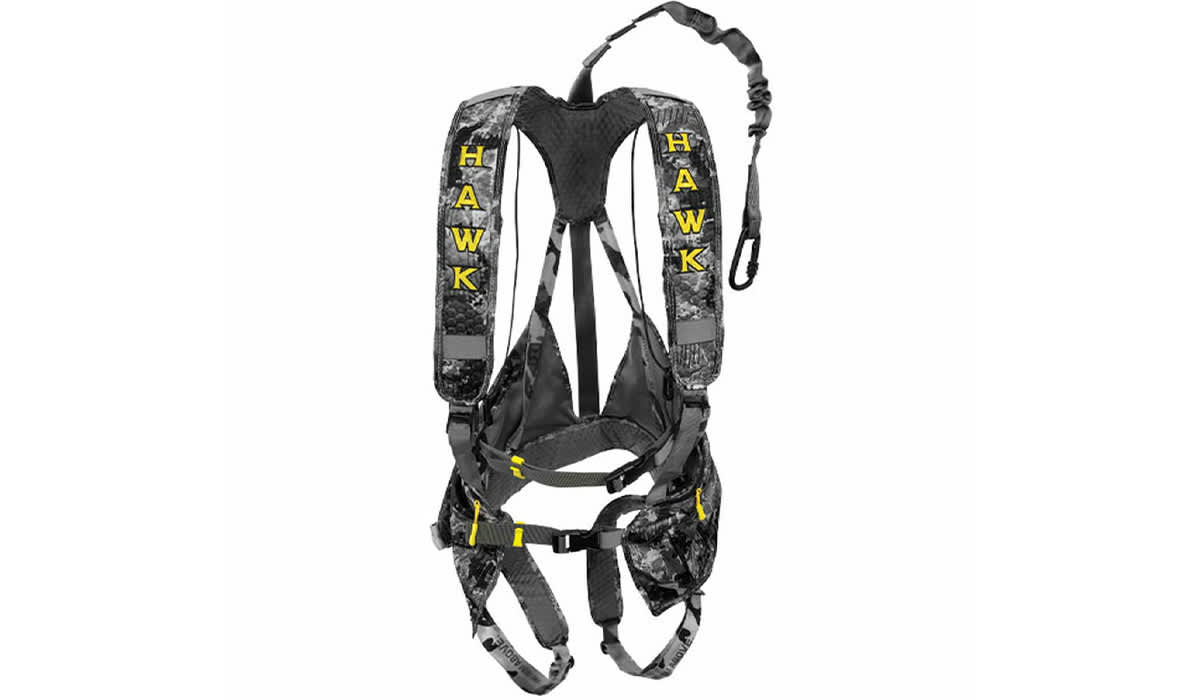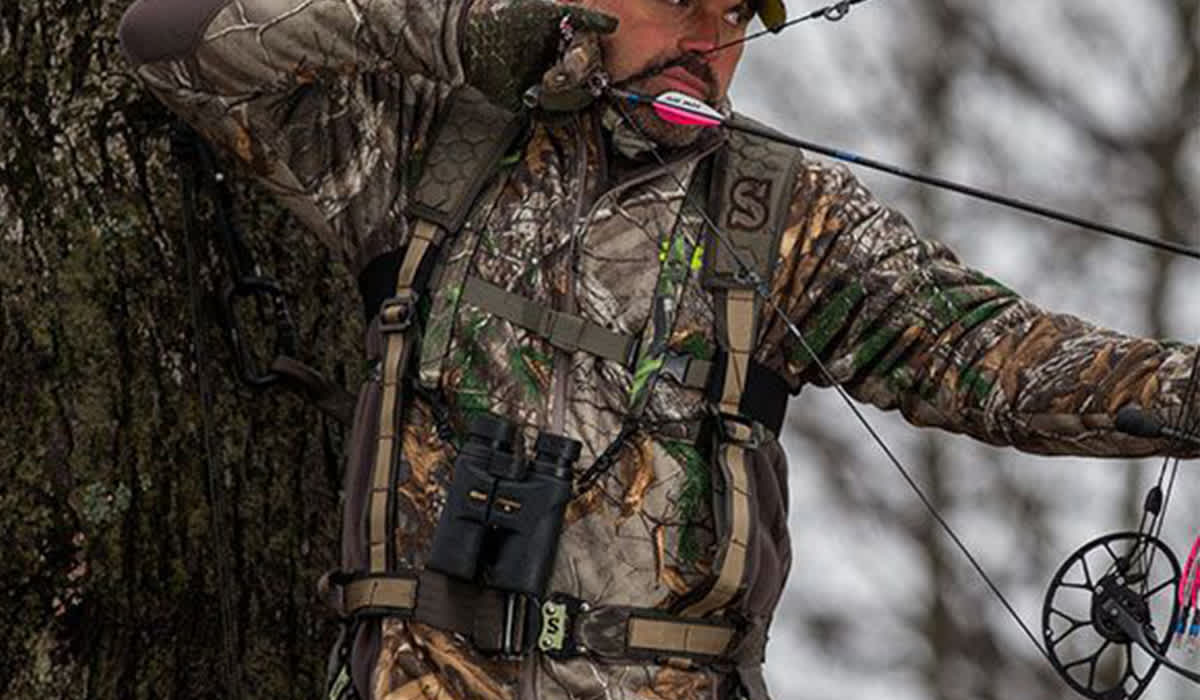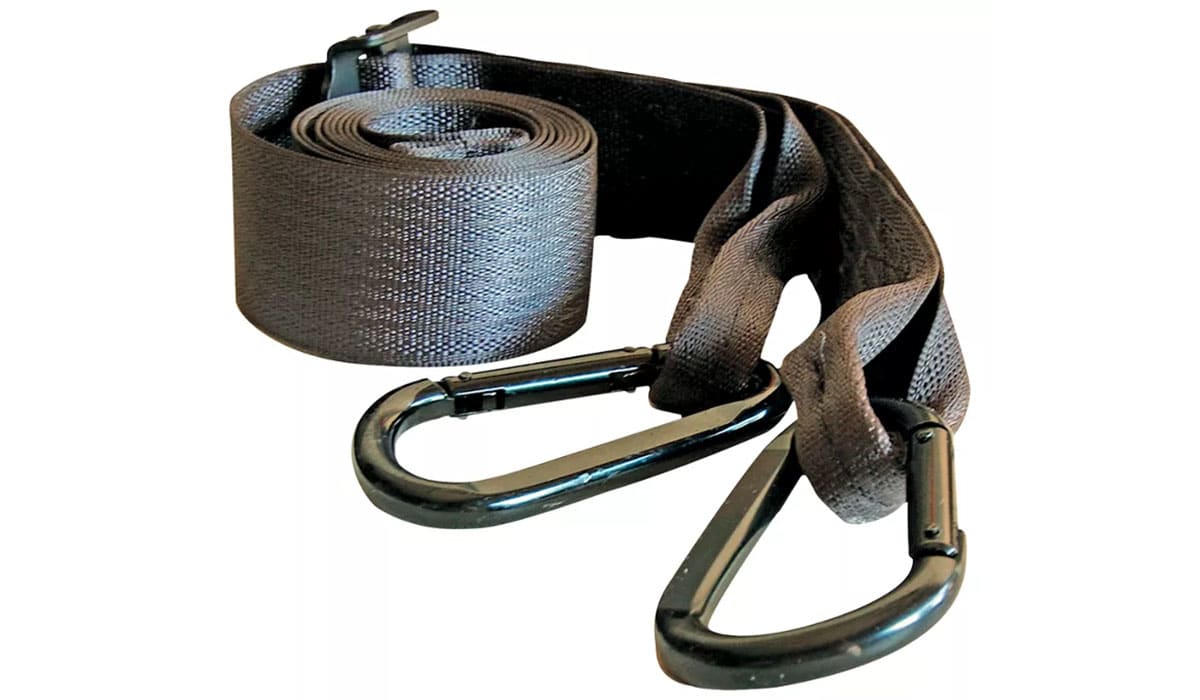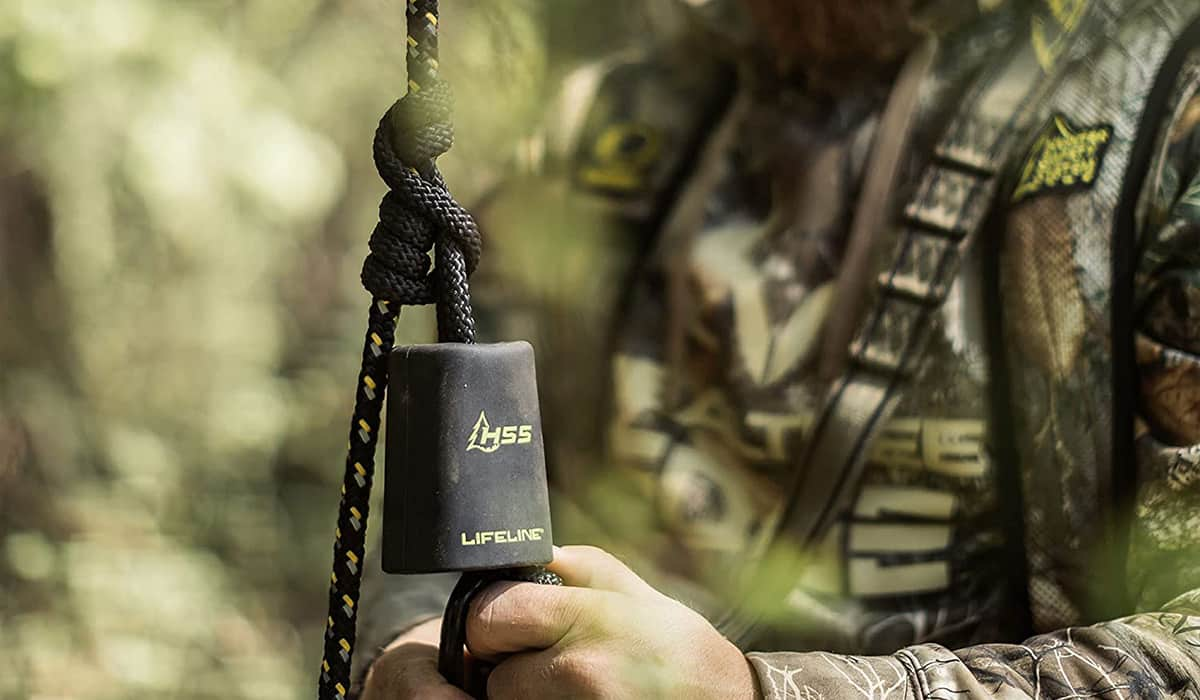Always Wear a Tree Stand Safety Harness
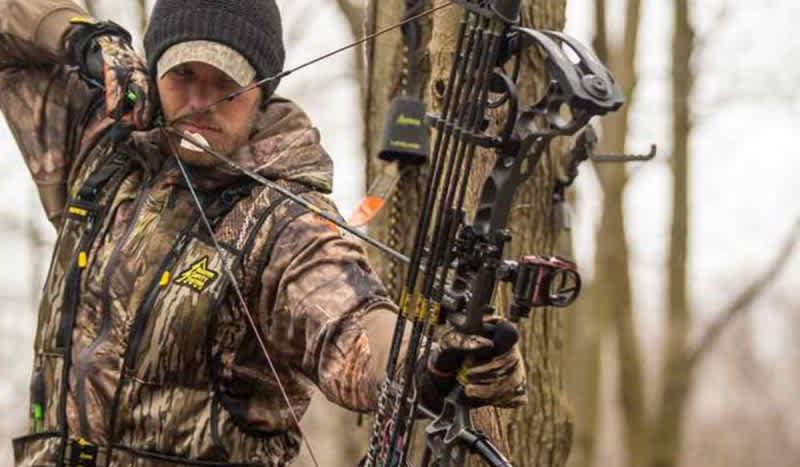
1. Hunter Safety System Pro Series – Editor’s Pick
Hunter Safety System is the Kleenex of tree stand harnesses. For years hunters were frustrated by the confusing mess of straps and knots that were available, or that came with their tree strand. HSS and their vest-style harnesses made getting safe in the tree easier than ever and hunters responded. The latest offering, the Pro Series, just builds on that legacy. New fabrics and ventilating mesh make the Pro Series 40% lighter than vests of the past. Which is even more incredible when you factor in that the vest actually contains a USB charging port that works with a compatible USB battery pack (not included) so you can charge your devices right in your vest. Last, but not least, is the ElimiShield Hunt scent control technology. This is heat-fused into the fabric to eliminate human odor from the harness for the life of the product.
2. Muddy Safeguard – Value Pick
The Safeguard from Muddy takes a minimalist approach to the tree stand safety harness. The padded, oversized shoulder yoke design makes finding your place in the harness easy, but the design is simple, without any additional vests or pockets, which can come in handy if you want to keep overall bulk down, or want to be able to pack your harness for a long trek to your stand and put it on once you get there. The flexible tether doesn’t get in the way, but allows for a large range of motion. The appeal here is value, and a simple design that won’t clutter you up. A great option for hunters who want to stay safe, affordably.
3. Hawk Elevate Pro – Compromise Pick
The Hawk Elevate Pro uses Form Fit Technology to make hunters comfortable and ensure they can get in and out of their harness quickly and easily. The padded shoulder and waist promote comfort, without being overly bulky. The storage pouch and gear hooks help keep gear organized and at hand so you don’t have to dig through your pack with suspicious cervid eyes on you. The Elevate Pro from Hawk is that perfect harness to bridge the gap between the full vest-style options, and the hard-to-use strap styles that come with your stand.
4. Summit Pro Harness – Customizable Pick
The Summit Pro Harness looks really basic at first glance, but don’t let it fool you, there are options to be had. The cushioned should straps provide comfort and support for getting into the harness, and if you follow those shoulder straps down the chest, you’ll see where the custom options come in. The Pro Harness from Summit uses a MOLLE strap system to let the hunter choose the level and type of gear storage they want on their harness. Like everything from Summit, the Pro Harness focuses on design and build quality to deliver a product that hunters can trust. The ability to choose how much or little else is on the vest that can save your life is just a bonus.
5. Hunter Safety System Lineman's Climbing Strap
Add some extra safety to your climb up when you use a Hunter Safety System Vest. This strap lets you climb to your stand, but it also helps with setting your stand. It allows you to rest back into the harness and frees up both hands for doing things like screwing in steps, or strapping down ladder sections. Needs to be used with a tree strap or Lifeline.
6. Hunter Safety System Reflective Lifeline 3-Pack – Accessory Pick
Is this a harness? No. So why is it on the list? Because you are hunting from a tree stand and using a harness, you should also be using a safety line to get in and out of the stand. Most tree stand accidents don’t happen when you are sitting in the stand. They happen when you are climbing into or out of your stand. Safety lines like the Lifeline from HSS use a Prusik knot to keep you secured and mobile while you ascend or descend a tree. Every stand location should have, and the 3-pack from HSS makes getting those stands setup as easy as ever.
Tree Stand Safety Checklist
Before you start the climb up, make sure you’re prepared.
- Your safety harness is on and fitting properly – that means it is snug and there are no gaps or loose spots that would allow you to slip out
- You must have a properly set-up safety line and are connected to it as well
- Throughout your climb, you must have at least three points of contact with whatever you are climbing, be it steps, a ladder stand, etc.
- Never carry anything with you while you climb – have an accessory rope to lift you bow, pack, rifle, etc.
- Always climb higher than your stand, unless you are using a ladder stand. this lets you step down onto the platform
- Once in your stand, keep the tether line short
- Always check all of your connections as you go – make sure you are properly attached to everything for your safety
- Have a knife and a communication device on your person at all times in case of an accident
- At home before the hunt, practice recovery from a fall, so you know how your safety harness will work and how you can recover from the initial fall
- Always let someone know where you are and when you’re going out

What happens when you fall
The human body is a weird thing, really. Each one is alike, yet vastly different, which makes determining exactly what can happen to you in the event of a fall from your tree stand rather impossible. Here’s the gist of it – It won’t be good.
Of course, we all know that younger people tend to have more elasticity in their bones and joints, making falling easier on the young than upon the old. This does not mean that younger people don’t need a safety harness, however. Quite the contrary. It’s not just the fall itself, but how the fall happens. You can hit things on the way down, or land upon something that inflicts even more damage than the fall and impact itself would. The possible outcomes are so vast in number, so let’s not focus on that. You may fall and think you’re ok afterwards, but there can be severe damage to you internally that can and has killed in the past.
Here’s what I want you to take away from this – even short falls can kill you. The risk doesn’t subside the closer to the ground you are. As soon as one foot leaves the ground to go up, you simply need to be in your safety harness and secured to the tree.

How many people get hurt in tree stand accidents every year?
According to stats provided by the Tree Stand Safety Awareness Foundation, in 2010 nearly 6,000 people had a tree stand accident that required emergency care. That number has gone down drastically thanks to education and awareness efforts, and bottomed out in 2019 with just over 1,900 people requiring care. That’s still 1,900 too many injuries and deaths. Especially when the vast majority of these are wildly preventable.
What is a Prusik knot?
A Prusik knot is a kind of knot that is tied onto another line of rope that allows the Prusik portion to slide along the other line, but when pressure is exerted on what is connected to the Prusik knot it stays locked on that portion of the second line. You are able to climb into a tree stand, pushing the Prusik portion with you, reducing the chance you have of falling.
We are committed to finding, researching, and recommending the best products. We earn commissions from purchases you make using the retail links in our product reviews. Learn more about how this works.

